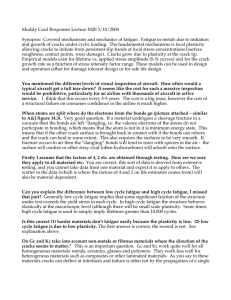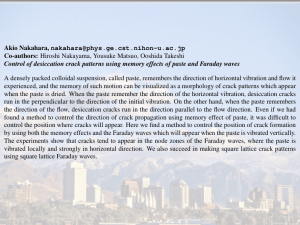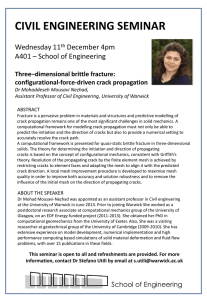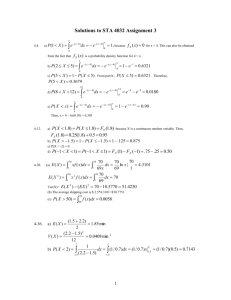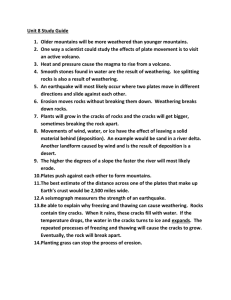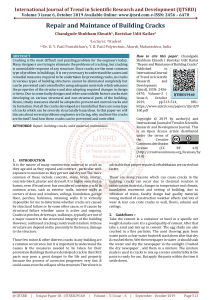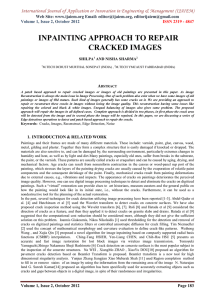Investigation of Candidate Features For Crack Michelle Meier , Oleg V. Shiryayev
advertisement
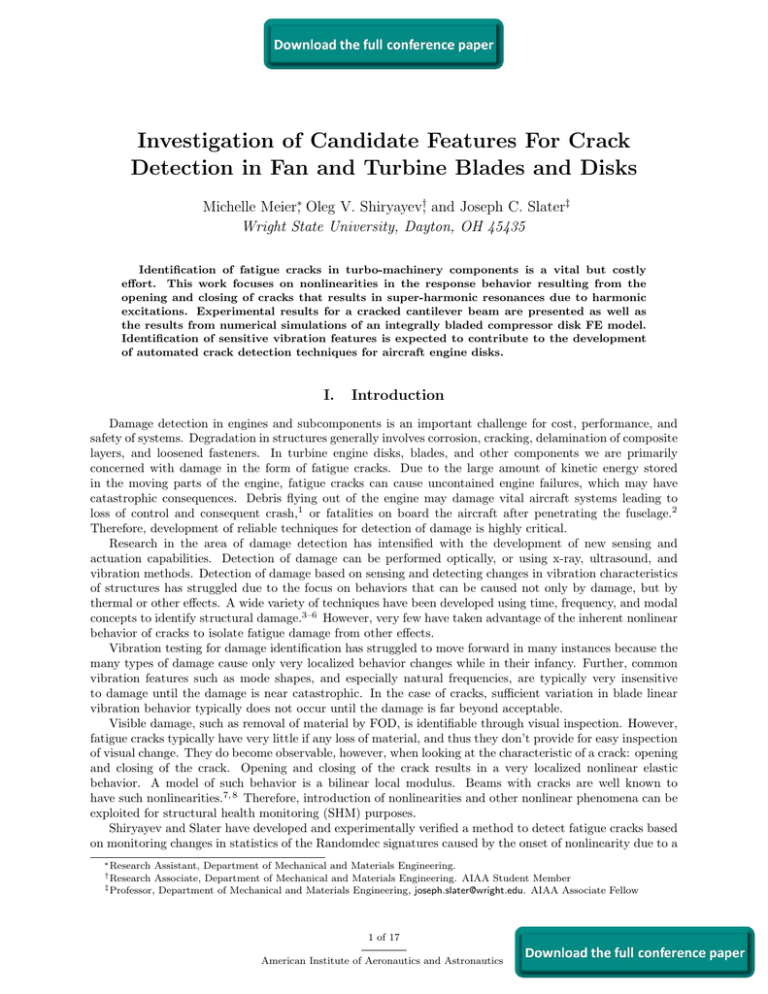
Investigation of Candidate Features For Crack Detection in Fan and Turbine Blades and Disks Michelle Meier∗, Oleg V. Shiryayev†, and Joseph C. Slater‡ Wright State University, Dayton, OH 45435 Identification of fatigue cracks in turbo-machinery components is a vital but costly effort. This work focuses on nonlinearities in the response behavior resulting from the opening and closing of cracks that results in super-harmonic resonances due to harmonic excitations. Experimental results for a cracked cantilever beam are presented as well as the results from numerical simulations of an integrally bladed compressor disk FE model. Identification of sensitive vibration features is expected to contribute to the development of automated crack detection techniques for aircraft engine disks. I. Introduction Damage detection in engines and subcomponents is an important challenge for cost, performance, and safety of systems. Degradation in structures generally involves corrosion, cracking, delamination of composite layers, and loosened fasteners. In turbine engine disks, blades, and other components we are primarily concerned with damage in the form of fatigue cracks. Due to the large amount of kinetic energy stored in the moving parts of the engine, fatigue cracks can cause uncontained engine failures, which may have catastrophic consequences. Debris flying out of the engine may damage vital aircraft systems leading to loss of control and consequent crash,1 or fatalities on board the aircraft after penetrating the fuselage.2 Therefore, development of reliable techniques for detection of damage is highly critical. Research in the area of damage detection has intensified with the development of new sensing and actuation capabilities. Detection of damage can be performed optically, or using x-ray, ultrasound, and vibration methods. Detection of damage based on sensing and detecting changes in vibration characteristics of structures has struggled due to the focus on behaviors that can be caused not only by damage, but by thermal or other effects. A wide variety of techniques have been developed using time, frequency, and modal concepts to identify structural damage.3–6 However, very few have taken advantage of the inherent nonlinear behavior of cracks to isolate fatigue damage from other effects. Vibration testing for damage identification has struggled to move forward in many instances because the many types of damage cause only very localized behavior changes while in their infancy. Further, common vibration features such as mode shapes, and especially natural frequencies, are typically very insensitive to damage until the damage is near catastrophic. In the case of cracks, sufficient variation in blade linear vibration behavior typically does not occur until the damage is far beyond acceptable. Visible damage, such as removal of material by FOD, is identifiable through visual inspection. However, fatigue cracks typically have very little if any loss of material, and thus they don’t provide for easy inspection of visual change. They do become observable, however, when looking at the characteristic of a crack: opening and closing of the crack. Opening and closing of the crack results in a very localized nonlinear elastic behavior. A model of such behavior is a bilinear local modulus. Beams with cracks are well known to have such nonlinearities.7, 8 Therefore, introduction of nonlinearities and other nonlinear phenomena can be exploited for structural health monitoring (SHM) purposes. Shiryayev and Slater have developed and experimentally verified a method to detect fatigue cracks based on monitoring changes in statistics of the Randomdec signatures caused by the onset of nonlinearity due to a ∗ Research Assistant, Department of Mechanical and Materials Engineering. Associate, Department of Mechanical and Materials Engineering. AIAA Student Member ‡ Professor, Department of Mechanical and Materials Engineering, joseph.slater@wright.edu. AIAA Associate Fellow † Research 1 of 17 American Institute of Aeronautics and Astronautics




